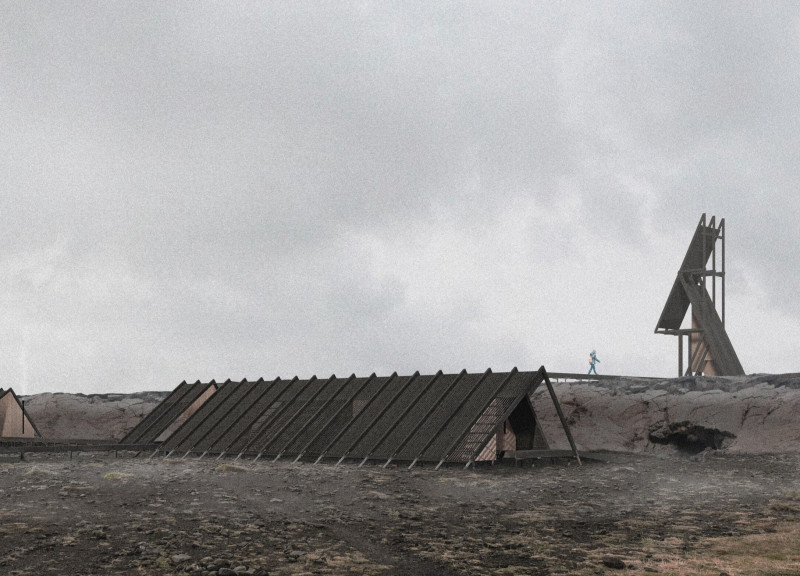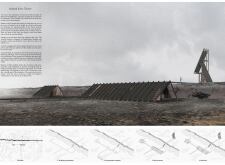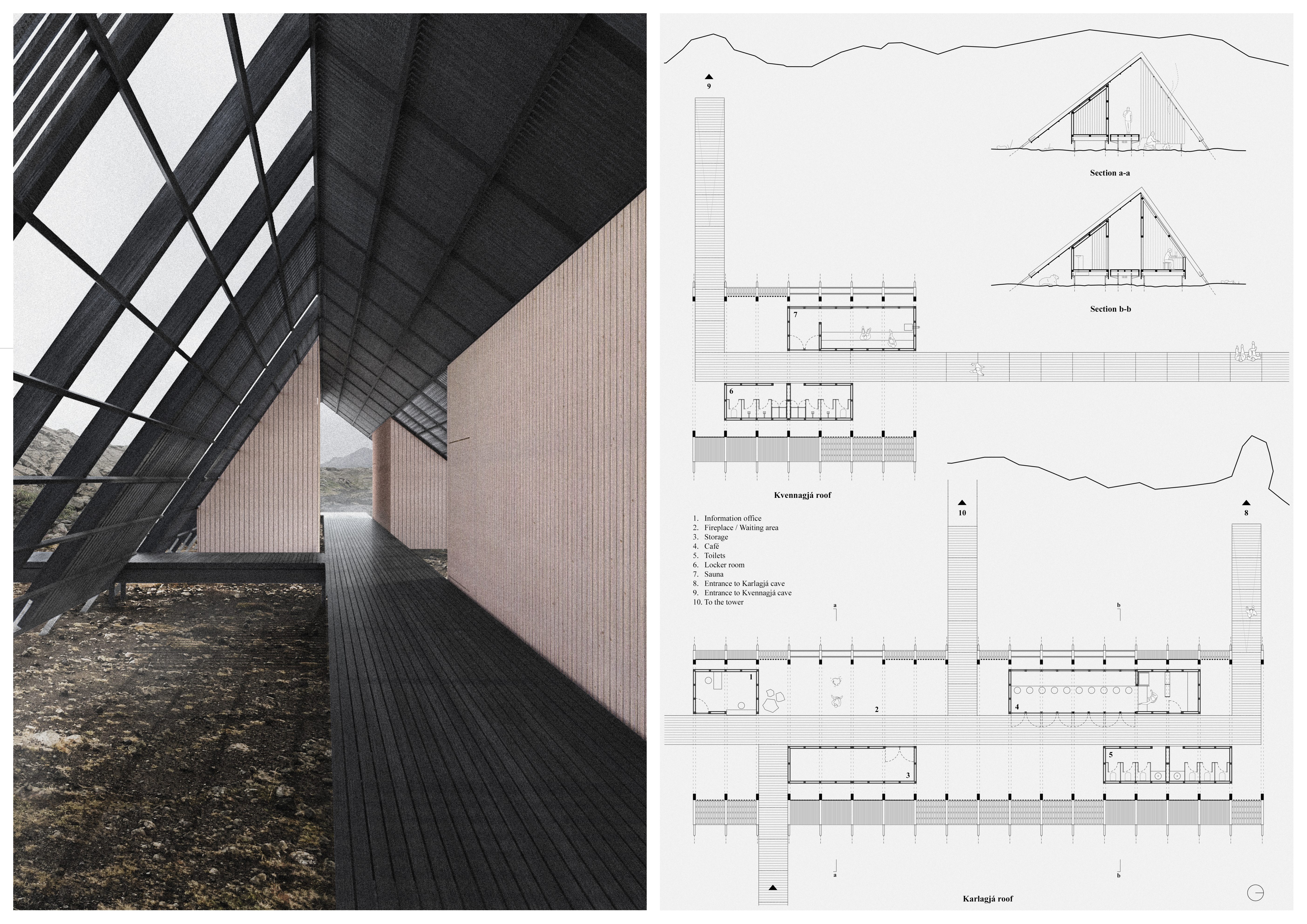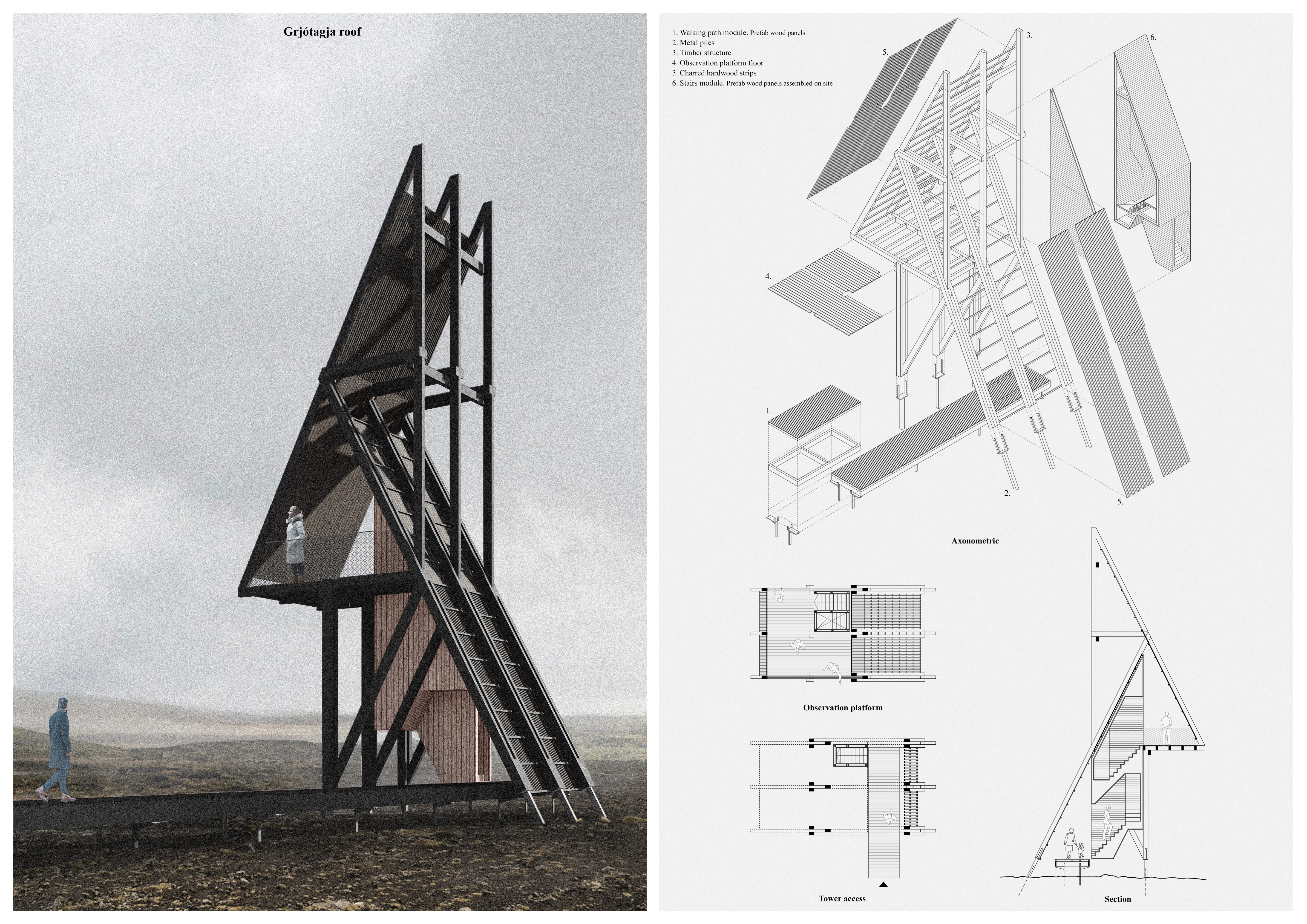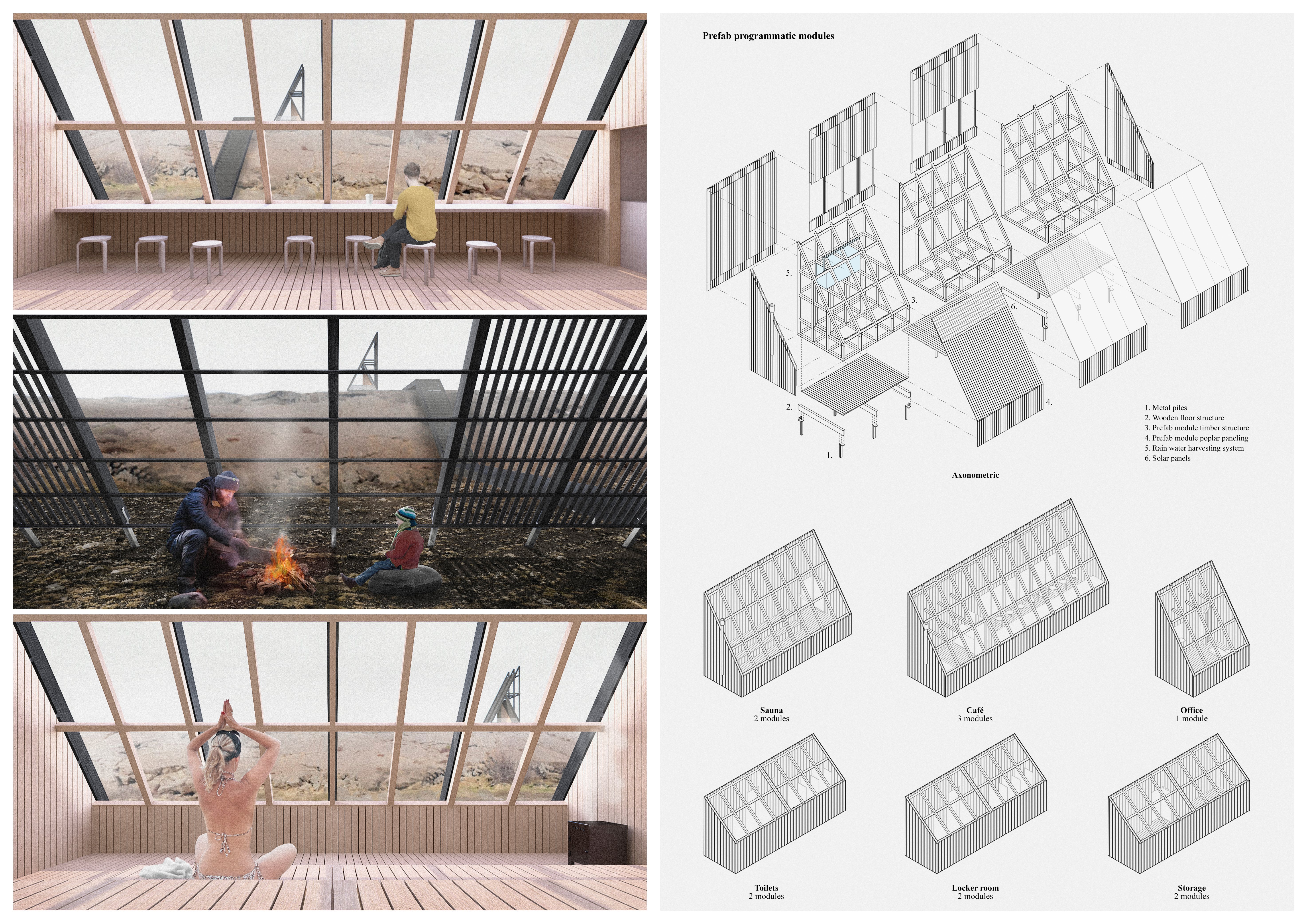5 key facts about this project
The Iceland Cave Tower project is located in a unique setting at the intersection of the Eurasian and North American tectonic plates. The design explores the concepts of hiding and peeking, encouraging visitors to engage with the natural landscape. Three interconnected roofs link two caves, creating a cohesive structure that enhances the experience of the surrounding geological features.
Design Concept
At the heart of the design are three wooden roofs that serve to connect the two continental contexts. These roofs do more than provide shelter; they also define spaces and guide movement throughout the site. Their arrangement emphasizes the geological crack, inviting visitors to explore the relationship between architecture and nature.
Roof Structures
The Karlagjá roof acts as the main access point for visitors, leading them toward several programmatic modules. These modules facilitate access to the largest cave and the tower, promoting exploration through clearly defined pathways. In contrast, the Kvennagjá roof offers a quieter experience within the smaller cave, catering to those seeking a more intimate space.
Geological Integration
The Grjótagja roof is strategically positioned on the North American plate, taking advantage of the elevation difference between the tectonic plates. This placement not only creates a visual focal point but also provides structural stability against Iceland’s challenging weather. The design respects and responds to its environment, creating a thoughtful presence within the volcanic landscape.
Material Considerations
Materials play a key role in the project, linking it to the surrounding area. The roofs are constructed using prefabricated wood panels, which allow for efficient construction while maintaining a connection to the landscape. Charred hardwood strips enhance both the appearance and durability of the roofs. The timber structure and metal piles further strengthen the overall design.
The modular nature of the design allows for growth and adaptation over time. Structures can evolve along the geological crack, reflecting the ongoing changes in the landscape. This aspect of the project emphasizes the relationship between architecture and the environment, highlighting a commitment to respecting the natural setting.


